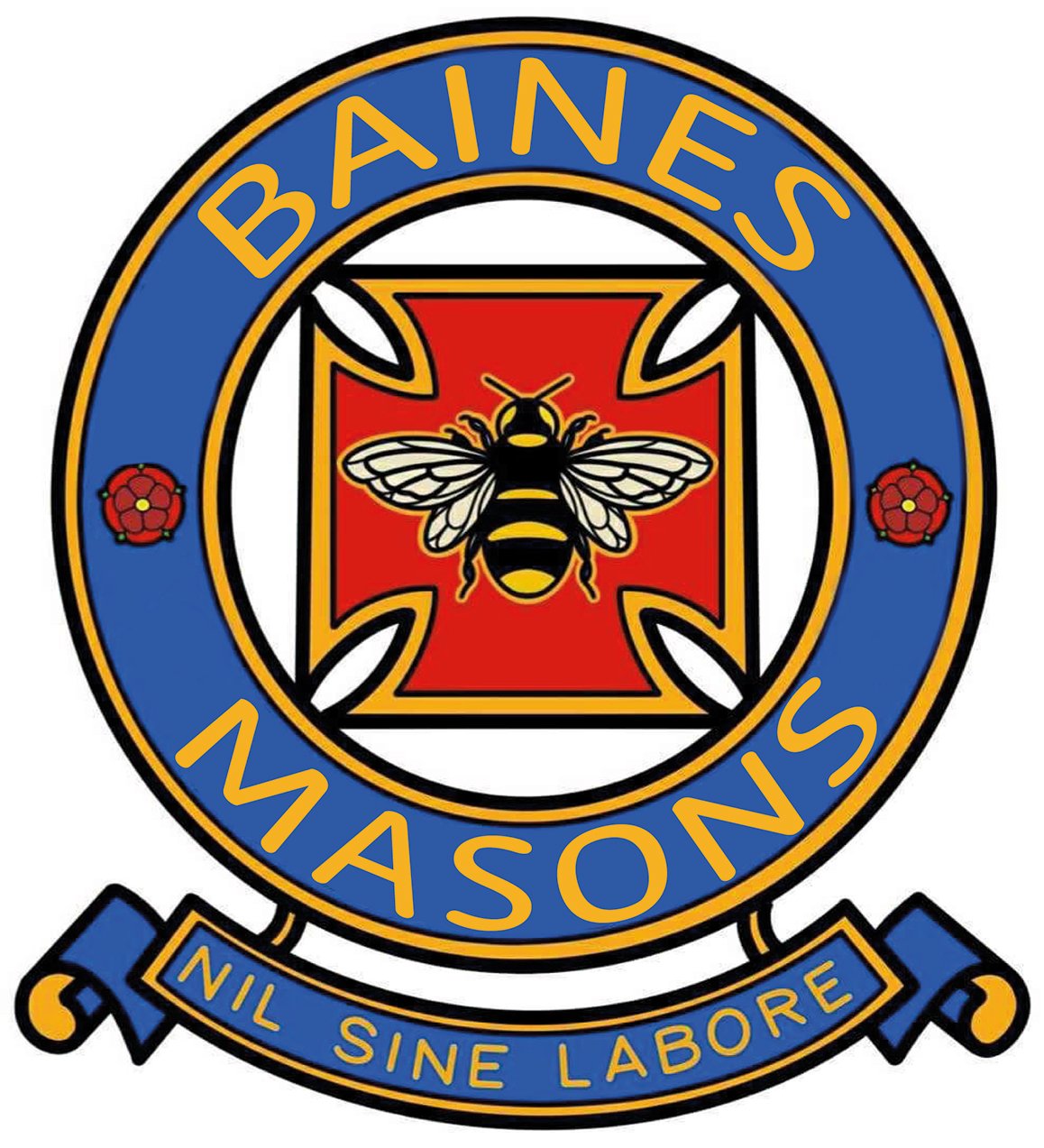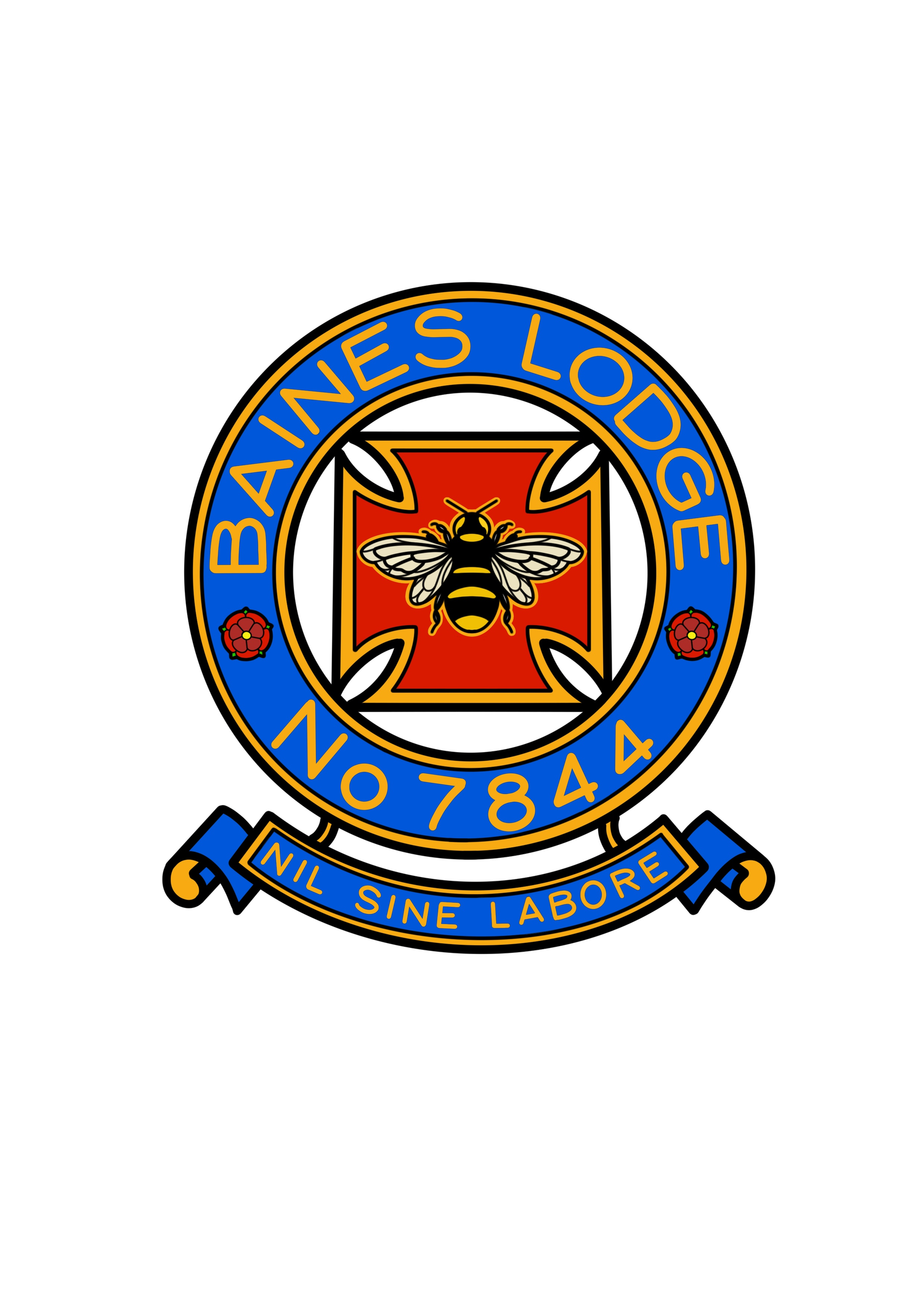Baines Lodge derives its name from Baines School in Poulton-le-Fylde
Baines Lodge was founded following a ceremony held at the Imperial Hotel in Blackpool on Friday 14th December 1962, but the work to get to that point had started some 18 months earlier, when several Freemasons, who were already members of the Baines School Old Boys Association, had determined to form a Lodge for former pupils and other men with a connection to the school.
By the time of the ceremony the final list of founders totalled 22 Freemasons, 21 former pupils and a teacher. The youngest of those founders was John Brian Wright, who went on to have an extremely distinguished Masonic career.
The first regular meeting of Baines Lodge took place on 11th January 1963 at the Masonic Hall, Poulton Le Fylde, during which, the first two new members were admitted. Eustace Horner was a bank manager from Blackpool and Philip Baron was a garage manager from Blackpool.
In 1967, the Lodge committee decided to allow existing Freemasons with a connection to Baines School to join the Lodge and just a few years later, to open up membership to more men, the founder members took the decision to remove the requirement for a connection to the school as a qualification for joining. The lodge continued for the next three decades building a reputation for performing high quality ceremonies, encouraging new members and making significant charitable contributions.
Over the years membership hit peaks and troughs but in the mid 2000s, a combination of some members relocating and several others unfortunately passing away, the Lodge hit a crisis point with only 13 members left. The three remaining founder members, all in their 70’s and 80’s could no longer maintain the effort they’d put into the previous 40 years and suggested that existing members fold Baines Lodge and move to another, local, stronger lodge to continue their Freemasonry.
Having been introduced and mentored by the founders, the junior members offered to use their enthusiasm to turn Baines Lodge around, and the founders in return, duly offered their full support, as they had throughout the previous four decades. This faith and foresight has resulted in the Baines Lodge you will find today, meeting at The Palace in St. Annes.
Baines Masons are a vibrant group of Freemasons focused on maintaining the historical and traditional aspects of Baines Lodge and Freemasonry whilst incorporating a modern outlook that includes wives, partners, children, extended family and friends.
The History of our Masonic Home, St. Annes Palace
St Annes Palace is a much-altered former Public Hall and Assembly Rooms and was opened on the 14th March, 1900. It’s built on two and three storeys with Queen Anne features and elevations on St George’s Road, Garden Street and St George’s Lane. It was built to a design by John Dent Harker. It’s constructed of brick with orange moulded terracotta embellishments under flat and pitched slate roofs.
Built for the St Annes Public Hall Company, the construction cost £11,000. Originally intended to be the Princess Picture House cinema, the decision was made to include a public meeting hall as well. The venue had a stage and dressing rooms, and with a seating capacity of 800 was fully licensed for dramatic and musical events.
In 1908 a Thomas Bannister bought the building, leasing it to Fred Carlton. Mr Carlton opened it in 1910 as the Public Hall Picturedrome. From 1913 it was known as the Palace Cinema – in an attempt to lure people from nearby Blackpool.
In 1922 the building was sold again. Still a cinema, after a re-fit reopened in 1924 as the Palace Cinema and Cafes. Seating capacity was now 1050 people – along with cafes, shops and a Masonic Hall on the ground floor. The restaurant had seating for 450 – and the first floor concert hall held another 600 people.
The Blackpool Tower Company bought the building in 1925 for £40,000 and ran the cinema until 1959. Operated as the Palace Cinema and Restaurant, it was complete with ballroom, restaurant and cafe. Plus assembly room, Masonic room, billiard room. And of course, shops on the ground floor fronting Garden Street.
Sometime in the inter-war years, part of the building fronting St George’s Road was converted into a car showroom.
From 1959 to today, the next owner was Lytham St Annes Masons. A mezzanine floor was added in the former cinema to create rooms on a new upper floor. This was converted the first floor into a Masonic suite – which is still used today by Baines Masons. In the main room there’s a vintage pipe organ which came from ‘Fairlawn’ at Ansdell in 1975.
The square and compasses symbol has a unique, profound meaning. It resides at the heart of Masonic lessons, beckoning all Brothers to live a life that is honest, true, and dignified. Any traveling man understands that when he sees this symbol, whether on the façade of a Masonic temple, the bumper sticker of a passing car, or a lapel pin of a colleague, he is in the company of friends.


